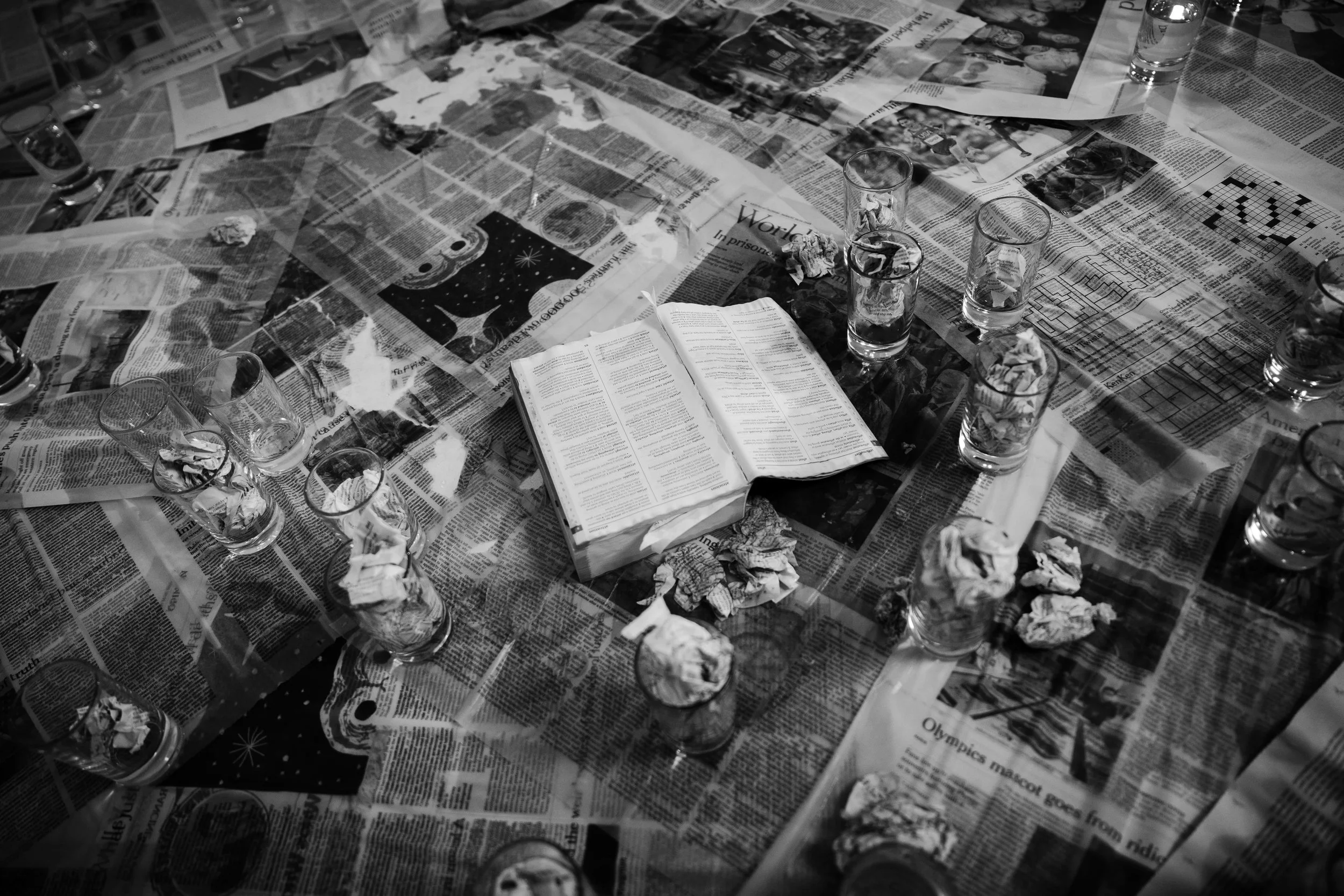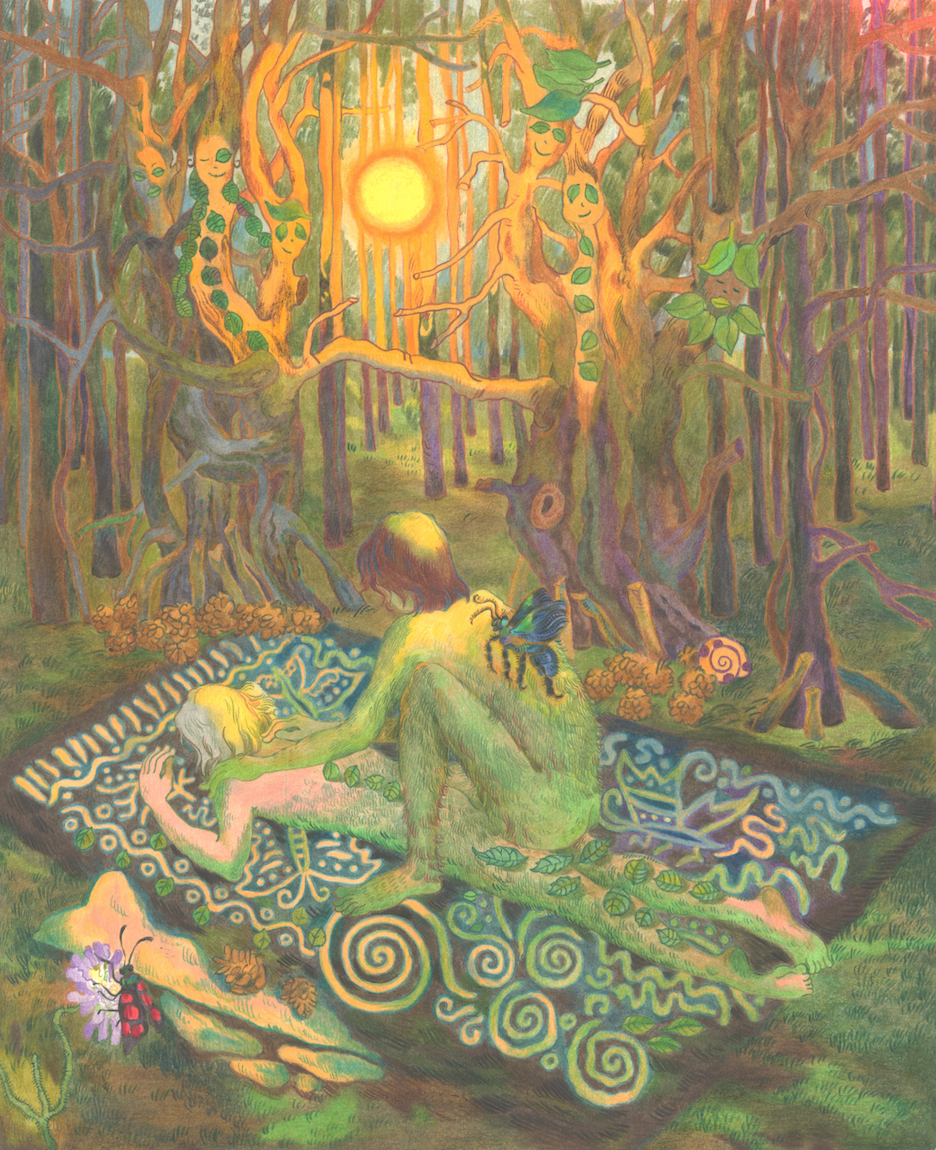10 Questions with Chu Ling-Jung & Tang Zi-Xian
Al-Tiba9 Art Magazine ISSUE18 | Featured Artist
Chu Ling-Jung, born in Taiwan in 2000, is an artist focused on feminism and consciousness. Her works often explore the unease in women's body shaping and gender perception under a patriarchal society and present these themes through deliberate bodily transformations. Chu Ling-Jung's diverse creative forms include performance art, video, and found objects. Through these mediums, she explores and presents the phenomena of the body in predetermined life events. Chu Ling-Jung attempts to reflect on her own external heterogeneity through bodily performance and physical transformation. She believes that by establishing shared life experiences with the audience, the resonance created through the presentation of art appears to enable both herself and the viewers to engage in each other's sensory worlds mutually. In her view, this sensory interpretation of art by the viewer is akin to achieving an enlightenment-like realization. She believes that the interweaving of human thoughts and the overlapping of life experiences in artistic expression represent her vision and ideals for the world of art.
Chu Ling-Jung - Portrait
Tang Zi-Xian, born in Taiwan in 1997, is currently pursuing a master's degree in the Department of Motion Picture at the National Taiwan University of Arts, focusing on directing, screenwriting, and cinematography. His film work centres on Taiwan's distinctive cultural context and marginalized communities. His works have been selected for multiple prestigious film festivals, including the Pingyao Crouching Tiger Hidden Dragon International Film Festival, the Taipei Film Festival, and the Golden Harvest Awards. Additionally, he received the Award of Excellence for Narrative Film at the New Taipei City Student Film Awards, the Award of Excellence for Narrative Film at the Youth Film Festival, and the Bronze Screwdriver Award at the Annual Screwdriver International Student Short Film Festival. Growing up in Chiayi County and later moving to Taipei during his university years, Tang Zi-Xian draws inspiration from his own experiences of environmental and cultural shifts. This background enables him to delicately capture the passage of time and the subtle interplay between individuals and their surroundings, grounding his works in authentic emotion and profound social reflection. With a unique ability to intertwine genuine emotion with keen observation, Tang Zi-Xian's films reveal the subtle connections between individuals and their environments, offering a mirror to society and its era.
Tang Zi-Xian - Portrait
Clearing the Text | Project Statement
Clearing the Text describes the dyslexic patient's intense desire to comprehend text, the despair of being unable to read, and the attempt to regain the ability to read by integrating their body into the text through various methods.
An installation, as a carrier of space, can create an interwoven experience between its presence and the viewer. However, when the installation is regarded merely as a medium connecting space and the viewer, the overlapping experiences of the viewer and the artist can be overlooked. By magnifying certain elements of the work in a sensory manner—directly presenting the artist’s own experiential process to those on-site—this approach parallels the way reflective text reiterates the author’s experiential framework, ultimately guiding the viewer toward a moment of “enlightenment.” If viewers are able to re-experience the essence of a work through a textual medium, could this enhance the sense of empathy between them and the artist? After all, the ideas generated during the creative process are inherently personal, and once a piece is presented, it is typically interpreted through the viewer’s own experiences. However, if the artist revisits the work on-site through performance art, the viewer’s and artist’s experiences can overlap within the original piece, thereby deepening their mutual resonance.
AL-TIBA9 ART MAGAZINE ISSUE18
INTERVIEW
How did you both meet, and what led you to start working together? Was there a particular moment that solidified your decision to collaborate?
Tang Zi-Xian: Our first encounter was through a mutual friend, where I served as the B-cam operator for Ling-Jung’s live performance, Defiance in Nude. After that, I began assisting with video editing. Once the script for Clearing the Text was completed, I took on the roles of director, cinematographer, and editor, marking our first full collaboration from pre-production to post-production.
What are your respective backgrounds, and how have your personal paths and skills influenced your current work?
Tang Zi-Xian: I am currently both a graduate student in film and a DJ. In the past, I focused on developing various film-related skills. To become a director, I worked in different capacities during my student years—directing, producing, cinematography, editing, and sound design. Having acquired these skills, I can readily apply my film background whenever my work involves images or sound. Additionally, my experience as a DJ, particularly in creating atmospheres and curating playlists, makes me more daring and experimental when selecting music for visuals. I truly enjoy leveraging my expertise in film to venture into diverse artistic domains.
Chu Ling-Jung: After graduating from junior high school, I began studying in the design field. Thanks to the diverse curriculum, I gained an understanding of almost all foundational concepts, operational methods, and design thinking across various design disciplines. When I later shifted to the art field, my previous learning experiences served as a crucial pillar of support. Whether it involves material usage or forms of artistic expression, I proactively seek out resources and continually refine my skills through self-directed learning.
This shift between technical skills and conceptual thinking has profoundly influenced and benefited the independent line of reasoning and logic I have developed. As a result, I can quickly analyze any artistic technique or creative context and then consider how to integrate interdisciplinary perspectives into my work. This process not only broadens my creative horizons but also lends greater depth and diversity to my pieces.
Clearing the Text, Short Film, Glass, Dictionary, Water, Newspaper, 2024
Collaborative Creation
Starring | Script | Art Director - Chu Ling-Jung
Director | Producer | Editor | Cinematographer | Composer - Tang Zi-Xian
Clearing the Text, Short Film, 2024 © Chu Ling-Jung & Tang Zi-Xian
As a duo, how do you navigate the intersection of your individual artistic voices while maintaining a unified vision?
Tang Zi-Xian: As mentioned before, I grew up studying film, so stepping into the art world feels both unfamiliar and exciting. Meanwhile, Ling-Jung has long been deeply involved in the art scene. In our collaboration, we use different ways of thinking to reach a common goal. For me, it’s straightforward: the main task is to fully present Clearing the Text, and my tools of choice are editing, cinematography, and music. On set, I record this one-time-only performance comprehensively and from multiple angles. Then, in post-production, I strengthen the parts that need to stand out—such as reflections in water cups on the floor or the performer’s emotional state—and construct an atmosphere of oppression and pain through the visuals.
Let’s talk about Clearing the Text. How did you develop this concept, and what roles did each of you play in bringing the piece to life?
Tang Zi-Xian: When filming Ling-Jung’s work, I adopt different ways of thinking and handle all the technical aspects myself. While cinema typically emphasizes “narrative,” capturing live performance art leads me to focus on “documentation” and “transformation.” Furthermore, once a performance begins, it can’t be recreated or paused, which is challenging for filming but also compels me to fully plan camera placement, shot rhythm, and how each scene will connect before we start. In post-production, I can then boldly edit the original long takes and utilize camera angles not commonly seen in film—such as a frontal overhead shot—to serve as key visual elements. My role fundamentally begins from a supportive standpoint, complementing and enhancing the performance art in the process.
Clearing the Text, Short Film, 2024 © Chu Ling-Jung & Tang Zi-Xian
Chu Ling-Jung: When I create, my process typically begins with a personal exploration and extension of core concepts. Accordingly, the idea for Clearing the Text was initially rooted in my written piece, “The Author as a Re-Experiencer,” which served as the foundation for my thought process. Building upon that base, my creative focus revolves around how to further expand my conceptual framework through each artwork. To me, art is about extracting my own ideas from the text and transforming them into concrete forms that can be interpreted through the senses.
As both a performer and an installation designer, I aim to examine a unique relationship derived from the original text—where the author serves simultaneously as an observer and a “re-experiencer” who resonates alongside the audience. The presence of this role not only prompts the creator to reassess their own work but also fosters a deeper bond and resonance between the viewer and the piece.
Please walk us through your creative process for Clearing the Text. Where did you begin, and how did you arrive at the final result?
Tang Zi-Xian: During the creative process, we began by discussing the text, estimating the key movements and blocking, and deciding on camera placements. More importantly, I needed a thorough understanding of the central concept behind Clearing the Text. Ultimately, I identified a complex mix of oppression, fear (of losing the ability to read), unease, and anxiety as the core emotions conveyed by the work.Armed with this pre-production groundwork, I had plenty of flexibility on set. When I saw Ling-Jung covering the floor with newspapers, I immediately thought of using an overhead shot to confine the performer within a specific area. After filming, I experimented extensively in post-production, trying out various sequences and selecting music and sound effects. The result is the piece in its current form.
Your work explores the interplay between installation, space, and the viewer’s experience. How do you approach this relationship when developing a new project?
Tang Zi-Xian: Installation, space, and experience are all closely tied to our everyday lives. Unlike straightforward still imagery, viewers should be encouraged to actively participate rather than passively receive whatever the creator provides. Consequently, in my new project, I continuously alternate between subjective and objective camera angles, and ultimately break the fourth wall at the film’s conclusion, creating a fusion of perspectives among the audience, the cameraman, and the subject.
Chu Ling-Jung: For me, an installation functions as a medium that carries ideas, embodying the artist’s thought process in tangible form. Meanwhile, space serves as a bridge of connection and interaction between the installation and the viewer. This relationship can be seen as building upon an architectural foundation to create an emotionally driven sensory experience. Whether it is a fundamental space or an extended medium derived from the creator’s concept, both can be viewed as fragmented manifestations that surface when viewers enter the original state of complete contemplation.
However, this notion of “fragmentation” does not imply dismantling the artist’s original thought process. Rather, it arises from the convergence of the viewer’s and artist’s ideas, ultimately leading to a deeper level of interaction and resonance.
Clearing the Text, Short Film, 2024 © Chu Ling-Jung & Tang Zi-Xian
Clearing the Text, Short Film, 2024 © Chu Ling-Jung & Tang Zi-Xian
Your practice suggests that performance art can allow the artist and viewer to overlap within the work’s original space. Have you experimented with this approach? If so, what were the most revealing moments?
Chu Ling-Jung: Performance art is a creative form centred on the concept of an “event.” To me, its essence lies in orchestrating an overlap between the artist’s and the audience’s presence within the original space of the work. Building upon that, beyond considering the spatial arrangement of the installation, it’s even more crucial to examine the convergence of experiential layers.
This project is still in an experimental phase. However, the integration of images with the arrangement of tangible objects and spatial elements might serve as a key source of inspiration, further expanding the creative possibilities.
Have you received any unexpected responses from viewers that reshaped your understanding of the piece or its impact?
Chu Ling-Jung: First, in addressing this question, I would like to analyze what “reshaping” means within my own work and further explore the precise relationship formed between the viewer, the author, and the artwork. The essence of this work, both conceptually and methodologically, lies in exploring how the viewer’s intervention overlaps with the artist’s own experience. Whether through the physical space itself or the emotional tint the artist casts over the piece, the very act of “understanding” already draws the viewer into the spatial domain. Although images possess no tangible space, once the installation is perceived in cinematic form, it continually reshapes our existing knowledge and comprehension of the work. The presence of the viewer already deepens and refines our understanding of the work.
What do you hope viewers take away from your work—intellectually, emotionally, or physically?
Tang Zi-Xian: As a moving‑image creator, I want the audience to be affected—pain, oppression, discomfort, release; any of these feelings may emerge. Yet, I cannot dictate the connections or projections viewers will form. Instead, I seek to foster a bond that transcends the emotional layer. In my view, emotion is the easiest element to trigger when people watch images, but sensation skips over emotion and elicits an immediate bodily response, which then loops back into feeling. That is the goal I pursue. This film, for instance, tries to make viewers experience the discomfort associated with mental illness so that the unease prompts reflection on what psychiatric patients truly endure. Rather than conveying meaning in the usual cinematic manner, I aim to invert the process and let significance arise through embodied experience.
Clearing the Text, Short Film, 2024 © Chu Ling-Jung & Tang Zi-Xian
Chu Ling-Jung: The central aim of this work is to help destigmatize mental illness. The public often fails to view mental disorders as genuine medical conditions, instead regarding them as the product of personal shortcomings. In reality, however, people with mental illness cannot fully control their emotions or accurately interpret how others perceive them, which leads to numerous misunderstandings.
For patients, the suffering caused by the illness itself is already a significant burden; the misunderstandings held by society inflict an even deeper wound. Such misconceptions prevent them from being seen as a group in need of care and instead mark them as outsiders. With this work, we aim to build a bridge of communication between patients and society, helping the public see mental health sufferers in a new light and encouraging greater understanding and support.
And finally, are there any upcoming projects where you plan to push your collaboration even further?
Tang Zi-Xian: In future projects, I aim to experiment further and explore more possibilities—using space, symbols, and sound to venture into unknown territories. By presenting the theme in a deliberately ambiguous manner, I hope each viewer will experience the work and discover their own personal point of resonance.
Chu Ling-Jung: In our current project concept, we treat space and visual form as bodily expressions and narrative symbols of a character’s inner emotions, so that the spatial and visual presence itself becomes a metaphor for the role.Consequently, the imagery must merge theatrical narrative space with painterly language; when visual art intervenes in film, it creates a blurred focal point that dissolves the boundary between two‑dimensional and three‑dimensional realms.



























